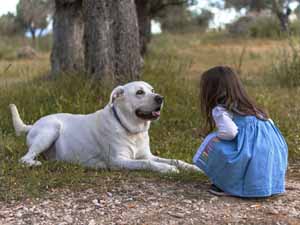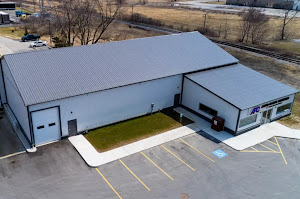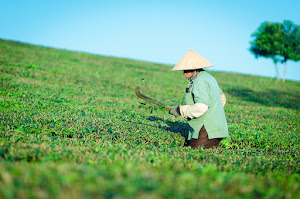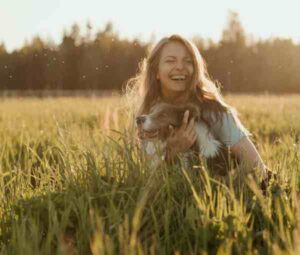Uses of fabric structures are becoming popular in seasonal farming. They are easy to build and relatively less costly as compared to fixed structures. As the agricultural landscape undergoes a rapid transformation, farmers are constantly seeking innovative ways to enhance their yield, reduce costs, and tackle the challenges posed by changing weather conditions.
One such innovation, garnering attention for its vast potential, is the adoption of fabric structures in seasonal farming. These lightweight yet sturdy shelters offer immense versatility, providing farmers with a dynamic solution that caters to their specific needs.
Understanding Fabric Structures in Agriculture
Historically, farming infrastructures such as barns and storage units were made of materials like wood, metal, or concrete. However, with the advancing pace of technology, fabric structures, often composed of high-strength woven fabrics, are making their mark in the agricultural sector. These materials are corrosion-resistant, UV-protected, and designed to endure diverse environmental conditions, ranging from high winds to snow loads.
The primary appeal of these structures is their adaptability. Unlike conventional farm buildings, fabric structures can be easily expanded, relocated, or adjusted according to seasonal requirements. This flexibility proves invaluable for farmers as it allows them to use the same structure for multiple purposes, such as machinery storage during the winter or livestock shade during the hotter months.
The Integration of Fabric Farm Buildings in Seasonal Operations
Seasonal farming is riddled with its own set of challenges: the unpredictability of weather patterns, the shifting needs of crops and livestock, and the constant drive to optimize costs without compromising on quality.
With these multifaceted demands, fabric farm buildings have emerged as a comprehensive solution. Let’s explore the extensive benefits they offer to seasonal farming operations:
1. Swift Installation and Dismantling
Traditional farm buildings made of brick, metal, or wood take substantial time, often requiring specialized labor, heavy machinery, and extended periods of construction. In contrast, fabric farm structures, thanks to their modular nature, can be erected faster. This is because they employ simplified assembly methods, often using bolt-together frames and stretched fabric.
Unexpected weather shifts, pest outbreaks, or sudden market demands can reshape a farmer’s priorities overnight. The agility offered by fabric structures means a farmer can quickly set up a new shelter for crops or livestock, adapt to changing conditions, or dismantle the structure to free up land for other purposes. This adaptability becomes particularly crucial during planting or harvest seasons when time is of the essence.
2. Climate Control Prowess
Beyond mere shelter, many modern fabric structures offer layers of insulation or specialized fabrics that help regulate temperature and humidity. Unlike metal sheds that can drastically heat under the summer sun or become too cold in winter, the fabric structures promote a balanced internal environment.
Plants and animals have specific climate needs. Even slight variations in temperature or humidity can affect crop yield or livestock health. Fabric structures, when equipped with climate control features, can mimic the optimal growth conditions for various crops.
This can be crucial for high-value crops that are particularly sensitive to environmental changes. Moreover, the controlled environment reduces dependency on external factors, ensuring consistent production regardless of external weather conditions.
3. Enhanced Mobility
Traditional farm structures are, by design, fixed. In contrast, fabric structures can be relocated with relative ease due to their lightweight yet sturdy design.
Farming is an evolving process. A patch of land that’s used for growing tomatoes this year might be needed for machinery storage the next.
The mobility of fabric structures allows farmers to adapt to these changing priorities without committing to permanent infrastructural changes. Furthermore, it lets farmers practice crop rotation more effectively, moving shelters as needed to accommodate different crop cycles.
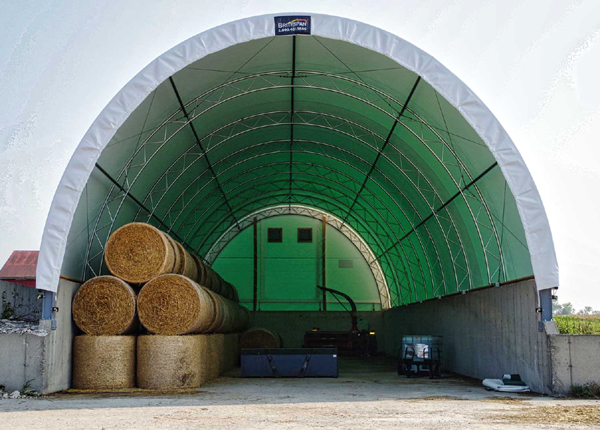
4. Cost-Effectiveness
The materials and construction processes involved in fabric structures are inherently less expensive than those of traditional farm buildings.
Beyond the initial cost savings, the longevity of fabric farm structures presents further economic benefits. Their resilience against weathering, corrosion resistance, and low maintenance requirements translate to decreased long-term costs.
Moreover, by being able to quickly adjust to the farm’s evolving needs, farmers can avoid the costs associated with building new structures or retrofitting old ones.
5. Environmentally Conscious Choice
Fabric structures, by their design and materials, have a reduced carbon footprint when compared to their traditional counterparts.
Agriculture’s environmental impact is a growing concern. Fabric structures, often made from recyclable materials, provide a more sustainable alternative. Their lightweight design minimizes ground disturbance, preserving the soil structure.
When they’re no longer needed, they can be dismantled and reused or recycled, reducing waste. In an era where sustainable practices can also affect marketability, this environmental consciousness is both an ethical and a business advantage.
6. Customizable Designs
Unlike traditional farm buildings that have fixed designs and require significant modifications for any changes, fabric structures offer a high degree of customization right from the onset.
Depending on the specific needs of the farm — whether it’s the requirement for natural light, blackout capabilities, varying heights, or specific dimensions — fabric structures can be tailored to fit these specifications.
Such customization lets farmers use them for varied purposes like greenhouses, livestock barns, or even storage spaces, optimizing their utility.
7. Productivity and Yield
For those involved in seasonal farming, maintaining productivity levels throughout various seasons is crucial. With fabric structures, farmers can create optimal conditions for their crops or livestock, regardless of the external environment.
For instance, during the rainy season, these shelters can protect hay and feed from getting wet, maintaining their quality. Similarly, in hotter climates, they can offer shade and cooling to ensure livestock are stress-free and healthy.
8. Optimal Light Diffusion
The unique material used in fabric structures allows for better light diffusion, ensuring that sunlight is evenly distributed within the structure.
Direct sunlight, especially in peak summers, can cause uneven growth in crops due to patchy light distribution. It can also create uncomfortable hotspots for livestock. The translucent nature of fabric structures ensures that sunlight is evenly diffused, eliminating harsh shadows and reducing the intensity of direct sunlight.
For crops, this uniform light exposure promotes consistent growth and reduces risks like sunburn. For livestock, it ensures a comfortable environment, reducing stress and promoting better health.
9. Weather Resilience
Fabric farm structures are engineered to withstand diverse weather conditions, from intense UV radiation to heavy snow loads, high winds, and torrential rains.
The unpredictable nature of weather patterns, especially with the advent of climate change, poses a significant challenge to farmers. A sudden hailstorm can devastate an entire crop cycle, and high winds can be a threat to both crops and livestock.
Fabric farm structures, made from durable, weather-resistant materials, offer robust protection against such environmental challenges. Their aerodynamic design can fend off high winds, while the fabric’s tensile strength and flexibility ensure that it remains unyielding even under significant loads. This weather resilience ensures that farming operations can continue unhindered, reducing potential losses.
10. Space Efficiency
Fabric structures, given their design, do not require internal supporting beams or pillars, maximizing the usable space inside.
For farmers, every square foot of space counts, especially when housing large equipment or managing livestock. The clear span design of fabric structures ensures that the entire interior is usable, without obstructions. This means larger machinery can be stored without spatial constraints, livestock can move freely, and crops can be laid out more efficiently. The result is optimized space utilization, which can lead to increased productivity and reduced clutter.
11. Ventilation and Air Quality
Many fabric structures are designed with integrated ventilation solutions that ensure a steady flow of fresh air while maintaining internal climatic conditions.
Proper ventilation is critical in farming. For crops, good air circulation prevents fungal growth and strengthens plant resilience. For livestock, it ensures the health and comfort of the animals, reducing the risks of respiratory diseases and heat stress.
Fabric structures, with their adjustable ventilation options, allow farmers to maintain the desired airflow, balancing temperature, humidity, and air quality. This leads to healthier crops, happier livestock, and reduced dependency on artificial ventilation solutions.


